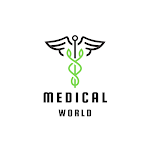Embolism
What is Embolism?
Embolism is the blocking of a blood vessels by any mass of material travelling in the blood. This is usually a thrombus or a fragment of a thrombus, but other embolic material are shown in box
Emboli originating in an artery travel away from the heart until they reach an artery too narrow to let them pass, and lodge there, partly or completely blocking blood supply to distal tissues. This is a common cause of stroke, myocardial infraction and gangrenous limbs. Emboli originating in veins travel towards the heart, and from there to the lungs in the pulmonary artery. They then lodge in the first branch narrower than they are (pulmonary embolism).
As an embolus moves through the body's blood vessels, its likely to come to a passage it cannot fit through. It lodges there, backing up blood behind it. The cells that normally get their blood supply via this passage are starved of oxygen and die. This condition is called an Embolism.
Types of Emboliasm
they are follow as-
Pulmonary embolism
An embolus, usually formed in the leg, lodges in one of the arteries of the lungs. Many emboli are broken down by the body and go away by themselves; however, serious pulmonary embolism may cause death.
Brain embolism
if a blood clot travels to the brain, this causes an ischemic stroke or transient ischemic attack.
Retinal embolism
Small clots that would not block a major artery can block the smaller blood vessels feeding retina at the back of the eye. The result is usually sudden blindness in one eye.
Septic embolism
this occurs when particles created by infection in the body reach the bloodstream and block blood vessels.
Amniotic embolism
Not all emboli are made of clotted blood. In pregnancy, the womb is filled with amniotic fluid, which protects the foetus. Amniotic fluid can embolize and reach the mother's lungs, causing pulmonary amniotic embolism.
Air embolism
scuba divers who rise to the surface too rapidly can generate air embolism, bubbles in the blood that can block arterial blood flow.
Fat embolism:
If fat or bone marrow particles are introduced into the blood circulation, they may block blood vessels the way a blood clot or air bubbles can.
Embolism Causes
Most embolisms happen to people who have risk factors for blood clot formation, such as smoking and heart disease. Other risk factors for other types of emboli include high blood pressure, atherosclerosis, high cholesterol and obesity.
Risk factors
They are follow as-
Embolism Symptoms
Deep Vein Thrombosis (DVT) does not cause any symptoms. However, symptoms can include:
Diagnosis
There are several tests that may be done to diagnose a pulmonary embolism. In addition to a chest X-ray, a ventilation perfusion scan may be performed to see if anything is blocking blood flow through the lungs. Other test include CT scan or pulmonary angiography. For deep vein thrombosis, Doppler studies of the legs, venogram, or impedance plethysmography (IPG) of the veins my be done to detect a blood clot. For strokes, brain scans, angiography, or Doppler ultrasound studies may be used to detect arteries blocked by a blood clot.
Embolism Treatment and prevention
The treatment for thromboembolism involves anticoagulant or thrombolytic medications. Anticoagulants, such as heparin, low molecular weight heparin, warfarin, or factor Xa inhibitors, are the main medications given for pulmonary embolism.
Non medication methods to help prevents DVT include using compression devices and compression stocking and moving lower leg muscles if they are inactive for a long time. Risk factors can be reduced to getting blood clot, by quitting smoking and controlling blood pressure.
How an embolism is treated will depend on:
A surgical procedure is called an embolectomy carried out to remove an obstruction. During the operation, a cut is made in the affected artery so that the foreign body causing the blockage can be sucked out in a process known as aspiration…


0 Comments